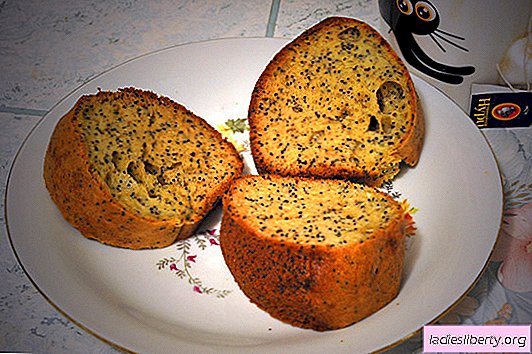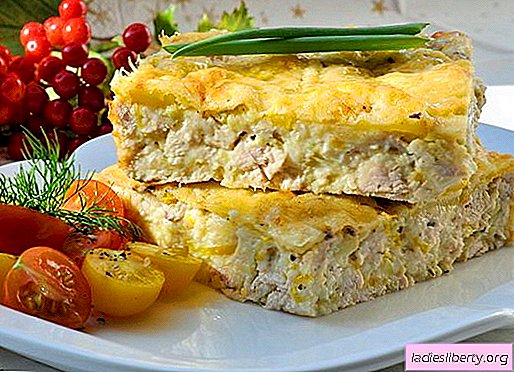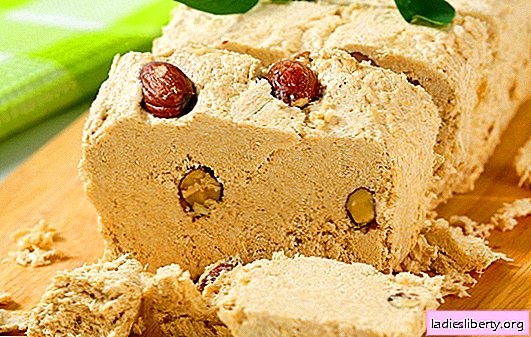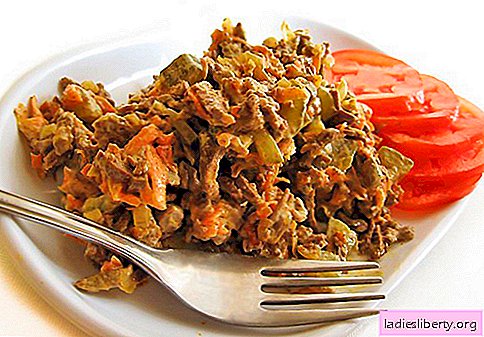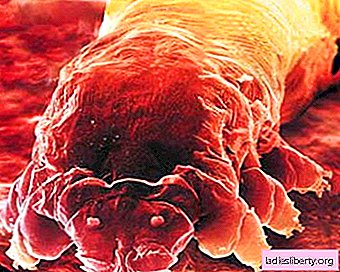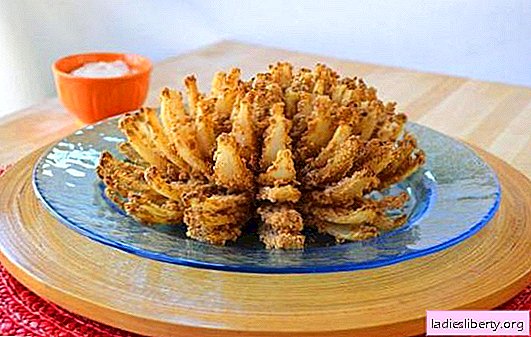
The active seven-month-old peanut for harmonious growth and development requires more and more nutrients. It is no coincidence that by this age, most babies have already introduced complementary foods in the form of vegetable puree and porridge, and sometimes meat puree. In the feeding schedule, meals gradually appear, reminiscent of a full breakfast, lunch and dinner.
Basic principles of baby nutrition at 7 months
A significant part of the diet at this age is still breast milk or its substitute - adapted milk mixture. And it depends on the type of feeding that which foods are already present in the baby’s diet by 7 months:
1. Natural feeding. A baby who feeds exclusively on mother's milk begins to inject complementary foods at six months. It is believed that up to this age, breast milk fully meets the infant's needs for essential nutrients. Therefore, by the age of 7 months, the baby masters complementary foods in the form of a single-component vegetable puree, milkless or milk porridge. But the meat is just beginning to be introduced little by little at about 7.5 months.
2. Artificial or mixed feeding. In this case, complementary foods begin earlier. Vegetables and cereals - at 4.5-5 months, meat - from six months. So, by 7 months, these products have already become familiar. The kid eats vegetable puree from several components, on his menu there are milkless and milk porridges, you can start cooking mashed vegetable soup with homemade meat puree.
Any new product in the baby’s diet is introduced according to the following rules:
• Start with a quarter teaspoon. Then a half, three quarters, a whole spoon. And so, with good tolerance, we gradually reach the age norm.
• We try everything new only in the morning, preferably in the morning. Then during that time, while the child is awake, there will be an opportunity to track the reaction to unusual food.
• If the baby does not like the new product, you can mix it with something already familiar. And you need to offer complementary foods only when the baby is really hungry.
What foods can be included in the baby’s nutrition at 7 months? How to do it right?
1. Vegetables. Zucchini, broccoli and cauliflower - this hypoallergenic trio is familiar to most seven-month-olds. Some already eat pumpkin. It's time to introduce the baby with boiled potatoes and carrots. You can combine these vegetables in a multi-component puree. Pediatricians have a formula for its proper preparation: 50% - cauliflower, 25% - zucchini and / or pumpkin and 25% potatoes. Important - potatoes should not be given much. Carbohydrate content is too high in this vegetable. Before cooking, potatoes should be kept in water for several hours to leave excess starch. This must be done if the crumbs have a tendency to allergies.
2. Porridge. At this age, it is permissible to give the child only the so-called gluten-free cereal. Simply put, those that do not contain gluten are a vegetable protein that can cause a serious allergic reaction. So far, kids can only eat rice, buckwheat and corn. Pediatricians recommend the use of special baby cereals of industrial production. The groats in them are well cleaned and finely ground, the porridge turns out to be of optimal consistency, easier to digest. Additionally, vitamins and minerals have been added.
But if mom prefers natural products, then for a seven-month crumb you can cook 10% porridge when 10 grams of cereal is taken per 100 ml of water. Previously, the cereal will have to be ground into flour to get the desired consistency.
3. Meat. If the baby is not prone to allergies, it is recommended to start with red meat - beef. It is rich in iron. But if the child has an allergy, especially to milk protein, then beef will not work. In this case, choose a hypoallergenic rabbit meat. Russian pediatricians are generally advised to start with ready-made meat puree in jars. It is more tender and homogeneous. Then, as you get used to the product, you can try to cook mashed potatoes from boiled meat.
4. At 7 months, you can already enter egg yolk. A quarter of the yolk is allowed twice a week. This is a very valuable product, it contains vitamins A, D and B12, as well as phosphorus and antioxidant selenium. Egg must be cooked for at least 10 minutes. A quarter of the yolk should be properly ground and added to the porridge.
5. Cottage cheese also present in the diet of a seven-month baby. It should be a product from children's dairy cuisine, the age norm is 30 grams per day.
6. You can also diversify the baby’s nutrition at 7 months mashed fruit. Apple, pear, from prunes or peach - we give that which the kid well tolerates. The norm per day is up to 70 grams. The same goes for fruit juices. But it is advisable to breed them with water.
7. You can add a little to the cereals or mashed potatoes oils - half a teaspoon of creamy or a teaspoon of vegetable per serving.
And another important point - after each meal, whether it is mashed potatoes or porridge, it is advisable for babies to be fed mother's milk. This is necessary so that the mother does not reduce the production of breast milk.
Baby menu at 7 months
The interval between feedings at this age is 3.5-4 hours. The diet below can be adjusted depending on the products already introduced. For breakfast and dinner, we choose different cereals - for example, buckwheat in the morning, in the evening - rice or corn.
Ur, after waking up:
Breast milk or milk formula - 200ml
Breakfast:
Porridge - 150 g;
Butter - half a teaspoon;
Fruit puree - 30g;
Boiled chicken yolk - a quarter (twice a week);
Breast milk or mixture - 50 ml.
Dinner:
Vegetable puree -170 g;
Mashed meat - 30g;
Fruit juice - 70ml or breast milk.
Dinner:
Porridge - 150 g;
Cottage cheese - 30g;
Fruit puree - 30g;
Breast milk or mixture - 50ml.
Before bedtime:
Breast milk or milk mixture - 200 ml.
Recipes for a seven-month-old baby
All dishes should be fresh, they should be cooked immediately before feeding.
1. Pumpkin puree
Cut the pumpkin in half, peel the seeds and peel. Dice. To prepare one serving of mashed potatoes we take about 170-200 grams. Freeze the rest and use as necessary.
Pumpkin cubes can be steamed and then mashed using a blender. For tenderness, add the milk mixture or a spoonful of vegetable oil. If we boil the pumpkin in water, then whisking to get the desired consistency, pour a little of the resulting broth.
2. Mashed potatoes from several types of vegetables
For one serving, take 100 grams of cauliflower (several inflorescences), 50 grams of zucchini, 20-30 grams of potatoes (half a small potato). Cauliflower must first be blanched. To do this, literally for 3 minutes we place the inflorescences in boiling water. We get a slotted spoon. Cut potatoes and zucchini into cubes. All vegetables are steamed or in water. Beat with a blender, adding a little milk mixture or broth from cooking vegetables.
Taste combinations can be different, depending on what vegetables the baby likes and what he tolerates better. You can make mashed potatoes such as zucchini, pumpkin and carrots.
3. Meat puree
It is important to choose a good quality meat. It can be beef, rabbit, turkey. Fillet without fatty layers and films is required. Boiling the meat, be sure to drain the first broth!
We cut the meat into pieces, cook until tender. Beat with a blender or grind twice in a meat grinder, add a little broth.
4. Vegetable soup with meat
We take 50 grams of meat and 150 grams of vegetables (zucchini, carrots, potatoes).
Place the meat in a saucepan with water, bring to a boil, boil for several minutes. We take out the meat, drain the broth.
Pour water again and set on fire. As it boils, return the meat to the saucepan, continue cooking. When the meat is almost ready, put the diced vegetables, cook until soft.
Beat the prepared vegetables and meat with a blender, adding the necessary amount of broth to get mashed potatoes.


